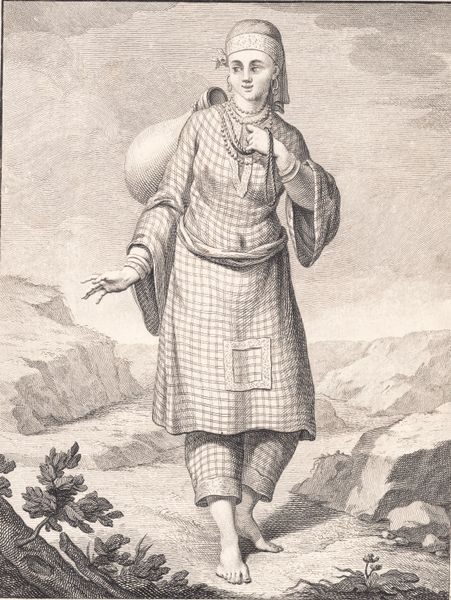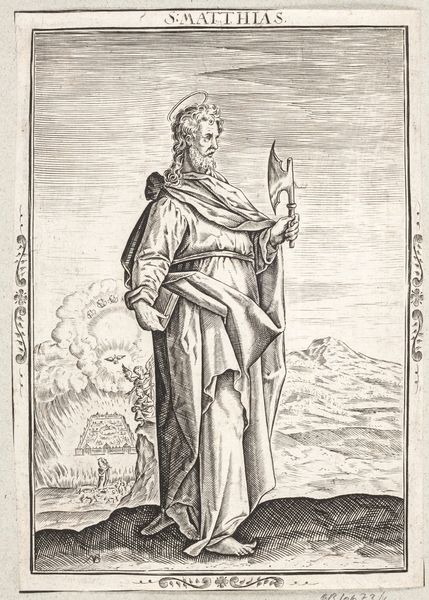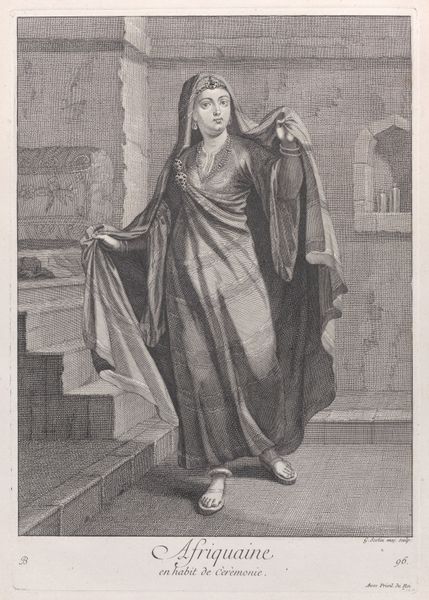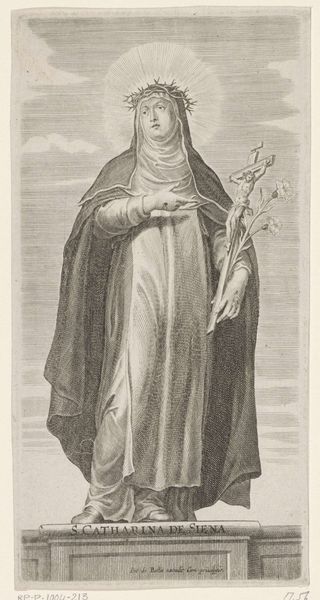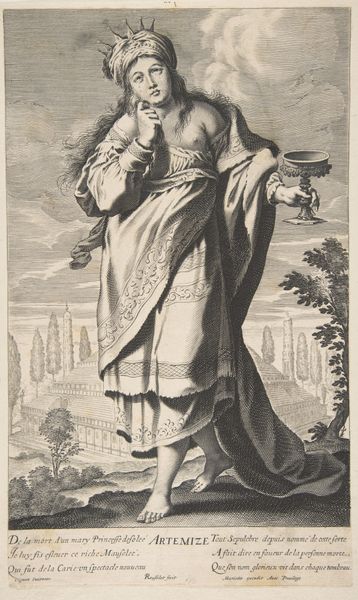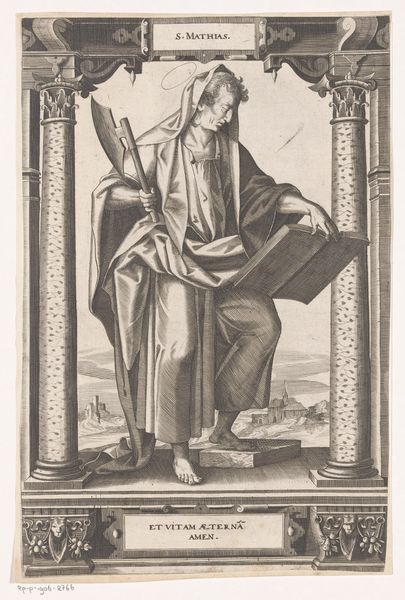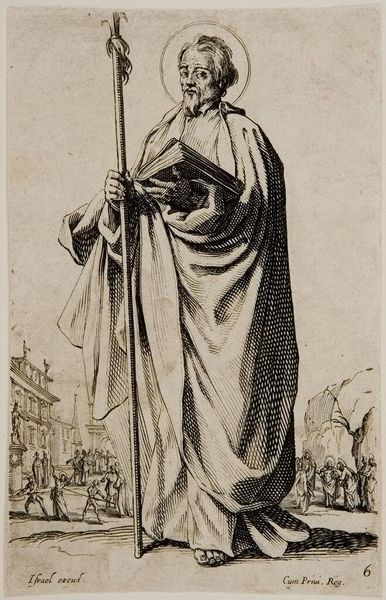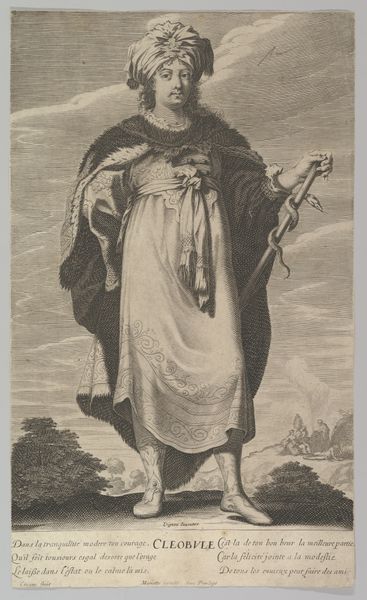
drawing, print, paper, engraving
#
portrait
#
drawing
#
neoclacissism
# print
#
figuration
#
paper
#
pencil drawing
#
line
#
portrait drawing
#
graphite
#
engraving
Dimensions: 233 mm (height) x 177 mm (width) (plademaal)
Curator: Welcome. Today, we’re looking at J.F. Clemens’ engraving from 1773-74, titled "En stående arabisk kvinde" or "A Standing Arab Woman," here at the SMK. It's rendered in print on paper, showcasing incredible detail through line and form. Editor: The first thing that strikes me is the quiet, almost austere dignity. Despite the clear skill involved, the scene avoids romantic exoticism, focusing instead on a portrait that feels deliberately measured and perhaps even restrained in emotion. Curator: That’s an interesting take. Focusing on the materials, the choice of engraving—the deliberate, meticulous work involved in creating each line—suggests a process meant for widespread consumption, placing this image within the broader social currents of its time, perhaps relating to Enlightenment-era ethnographic interests. Editor: Indeed. But consider the symbols at play. Her bare feet and simple adornments hint at authenticity, while the specific placement of her hands, the cloth that modestly covers her head, are signifiers deeply embedded within a specific cultural and potentially religious context. These symbols transcend a mere neutral portrait. Curator: Perhaps. The printmaking itself would involve skilled labour; what was the relationship of the craftsman to the representation? Did he know his subject intimately or just mechanically recreate someone else's sketches or ideas of the region, reproducing colonial viewpoints as it traveled and reproduced for distant viewers? Editor: Absolutely, it's impossible to ignore the implied power dynamic inherent in such representations. But focusing on the internal structure, observe how the artist directs our gaze toward her face, particularly her eyes. They convey something more than passive observation; a subtle challenge perhaps? I wonder about the meanings contemporaries might have ascribed to the jewellery she wears. Curator: And I find myself wondering about access to that raw material. Who profited from its supply chain and who determined that labour was allocated here rather than elsewhere. Editor: These two distinct vantage points enhance my understanding considerably; thanks for guiding us. Curator: My pleasure, it really underlines how artworks simultaneously serve multiple readings in our ever-shifting social world.
Comments
No comments
Be the first to comment and join the conversation on the ultimate creative platform.

